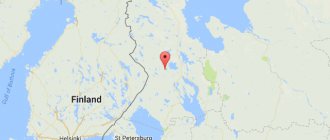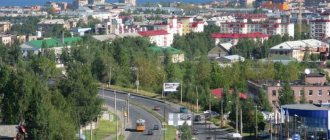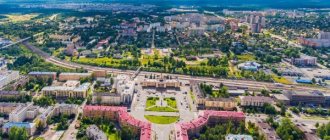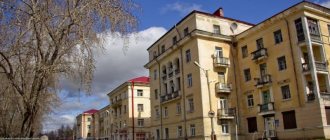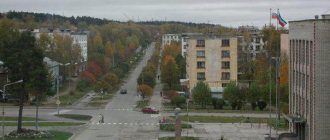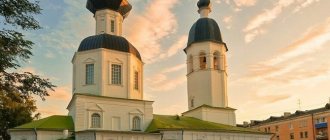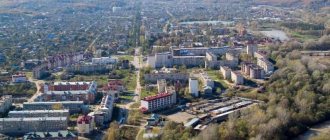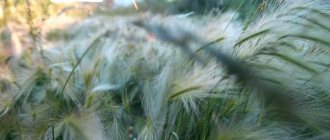Republic of Karelia: cities and regions of the Republic of Karelia, recreation, excursions, nature reserves, parks, museums, churches, attractions.
- May tours
to Karelia - Last minute tours
to Karelia
Russian and foreign tourists have long had their eye on the Karelian region. And this is not only about their virgin nature and unique architectural monuments. The main reason is simple: the tourist season in the republic is not limited to the three summer months - people travel to Karelia continuously throughout the year. Both fans of active tourism and those who love relaxing trips with the whole family will find relaxation here.
Karelia is located in the north-west of the country and is part of the North-Western Federal District. This is a republic within Russia: it has its own coat of arms, flag and anthem. About 50% of the territory of the Karelian Territory is covered with forest, and a quarter is covered with water. Karelia is a land of lakes, there are more than 61 thousand of them, as well as another 27 thousand rivers and 29 reservoirs. The largest lakes are Ladoga and Onega, and the largest rivers are Vodla, Vyg, Kovda, Kem, Sunna and Shuya.
The Blue Road, an international tourist route connecting Norway, Sweden, Finland and Russia, runs through Karelia.
Main types of recreation: excursion tours (Kizhi - Valaam - Solovki - Kivach Falls - Marcial Waters - Ruskeala Marble Canyon), active recreation (quad bike safaris, rafting on rapids rivers, hunting and fishing, hiking, skiing, bicycle tours, jeep tours) tours), children's and youth holidays in camps, event and holiday tours, holidays in cottages and tourist complexes.
How to get to Karelia
To get to Karelia, you can use any convenient way: go by train to various cities in the region, arrive there by bus, or fly to the main city of Petrozavodsk.
Air flies to Karelia airport from the capital. From St. Petersburg and other Russian cities you will have to fly with a connection in Moscow. Direct trains from both capitals depart to Petrozavodsk several times a day; from St. Petersburg it is most convenient to travel by Lastochka: the train takes only 5 hours. Many travelers come by their own car - you can also explore the remote areas of Karelia.
Search for cheap flights to the Republic of Karelia
Education
- Republic of Karelia in the project “Informatization of the education system” (ISO)
- Republic of Karelia in the Intel Learn Program (“Learning with Intel”)
- Project “Guide Books to Cultural and Historical Places”
- Educational institutions of the Republic of Karelia (list)
- Higher educational institutions (HEIs) of the Republic of Karelia
- Pedagogical communities of the Republic of Karelia
Regions and resorts of Karelia
The Republic of Karelia is conventionally divided into 5 regions: the only large city of Petrozavodsk, Lake Onega, Ladoga region, White Sea region and the northern part of the region bordering Finland.
Petrozavodsk lies on the shores of Lake Onega and is famous for its not too long, but rich history. The city itself has several cathedrals, a charming promenade and the impressive Doll's House art gallery. You can also go to the picturesque suburbs: Svyatozero, Kokkoilo, Mount Sampo and Martialnye Vody.
Lake Onega is the most popular place among tourists. Here are the famous petroglyphs - Neolithic rock paintings on capes Besov Nos, Peri Nos and Karetsky Nos, and the world-famous Kizhi Nature Reserve, and the outskirts of Medvezhyegorsk, notorious for the burial places of victims of political repression. The Murom Monastery and Vodlozersky National Park are also worth a visit.
Petroglyphs were discovered in 1848 and made Karelia famous throughout the world.
Ladoga region is another southern region of Karelia with very beautiful nature. The climate here is mild, and the forests and rocks are classic, Karelian. People come here to see the ancient town of Sortavala, the Valaam archipelago and monastery, and ancient Olonets. It is in the Ladoga region that the Ruskeala mountain park is located.
To the north is the White Sea, a large bay of the Arctic Ocean. In these places, guests are attracted not only by the harsh nature, but also by the Solovetsky Islands and Neolithic structures of the 4th-1st millennia BC. e. Closer to the border with Finland, you can explore the towns of Kostomuksha and Kalevala, which bears the name of the Finnish epic, as well as the Paanajärvi National Park and the Kostomuksha Nature Reserve. This is the least explored area by travelers because getting to these places is not easy.
City infrastructure
There are industrial enterprises in the city. Here they process metal rocks, build cars and machine tools. For quite reasonable reasons, the woodworking industry and, as a result of this activity, the printing industry are well established.
Petrozavodsk can be reached by all existing means of transport. There are many road connections with other regions of the country.
A railway track runs through the city. Trains follow the following route - Murmansk-St. Petersburg - Moscow and back. You can also get from Finland and in the opposite direction by plane of Finnair airline.
It is believed that Petrozavodsk is a European city . Various conferences and large seminars are regularly held here. Citizens are often invited to exhibitions and fairs, where many foreign products presented by famous brands are present.
Hotels in Karelia
Karelia offers a variety of accommodation options: from campsites to good hotels. It is profitable to stay in hostels and campsites; a night there costs from 800 RUB per person, but the conditions are truly spartan. For those traveling together, it is more convenient to rent an apartment or stay in a guest house; this will cost approximately 1000-1500 RUB per day.
The price of a simple room in a modest two-star hotel is 1900 RUB, 3* complexes offer overnight accommodation for 2500 RUB, and the most expensive hotels will charge 4700-6000 RUB per day per room. Another option is to rent an entire cottage for a group of 4-10 people.
Transport
You can travel around Karelia by trains, buses and water transport.
Due to the fact that the railway crosses the region only from north to south, this mode of transport is not the most convenient: it can be difficult to even get to the neighboring city if it is located to the east or west. But many travelers use trains. The Petrozavodsk-Kem line is especially in demand. For example, a trip to Belomorsk lasts approximately 7 hours, and from Sortavala to Kostomuksha can be reached in 13 hours. You can check the schedule and buy tickets online at the office. Russian Railways website. Prices on the page are for February 2022.
The network of bus routes is well developed. From Petrozavodsk you can go to Kem, Belomorsk, Kostomuksha, Medvezhyegorsk, Sortavala and a couple of dozen other cities in Karelia. A ticket to Kem costs 950 RUB, to Olonets 450 RUB. Detailed information - at the office. carrier's website.
Many buses depart from Petrozavodsk bus station to Finland.
You can sail from the capital of Karelia by water to the island of Kizhi, but only excursion boats go to the petroglyphs. For example, a meteor from Petrozavodsk to Kizhi will cost from 1500 RUB one way, the travel time is about an hour. All information can be obtained at the office. Petrozavodsk transport website.
Motor ships from Sortavala move to Valaam, and from Kem and Belomorsk to Solovki.
City transport in Petrozavodsk is represented by trolleybuses, which operate from 6:30 to 23:00; travel costs 25 RUB. There are also commercial buses, the ticket price is 30 RUB.
Petrozavodsk
The capital of Karelia is Petrozavodsk. We'll talk about it below. The largest tourist settlements are Medvezhyegorsk, Pudozh, Kondopoga, Sortavala and other cities. Karelia is inhabited by about 700,000 inhabitants.
Petrozavodsk is the main city of Karelia . It is not surprising that all the administrative centers of government of the republic are located in it. There are a lot of scientific centers here that are engaged in research and development, conduct seminars and conferences, which attract not only local scientists and candidates of science, but also representatives of various research centers and institutes from all over Russia.
It's no secret that tourist trips and, in general, holidays in Karelia for the vast majority of visitors begin in Petrozavodsk, because almost all roads from Russia lead here. Accordingly, from here you can go in any direction in Karelia.
Petrozavodsk is also rightfully the educational center of the republic. Two universities and one conservatory are located here and successfully carry out educational activities. These educational institutions have produced many talented young specialists who have found themselves in various fields of activity not only in Karelia, but throughout Russia.
More than 40,000 people study in secondary educational institutions, of which there are 16 in the capital, as well as in 49 general educational institutions (schools, gymnasiums, lyceums).
Rent a Car
For those traveling without their own car, but wanting to explore the region, it makes sense to rent a car. In Petrozavodsk there are several local companies; in other cities, most likely, you will have to negotiate with private individuals, and the service will be complex: “car + driver”.
Rental costs from 1,500 RUB per day, in most cases you will have to leave a deposit for the car. To rent, you will need a passport and driver's license, driving experience must be at least two years, and the driver must be at least 21 years old. Although some companies make concessions. The car is issued with a full tank of gasoline, and must be returned in the same condition.
When choosing a car, you should take into account your plans: it is better to take an SUV, since there are very difficult places in Karelia. It’s worth taking care of the car in advance and making arrangements from home to choose the right model.
How to avoid problems
Mosquitoes are found everywhere from late May to early September, but are especially active from early June to mid-July. So don't forget to stock up on special tools. Ticks do not live everywhere - pine forests and areas where lingonberries and blueberries grow are free from them. They also do not like direct sunlight. Therefore, for relaxation it is better to choose sunlit forest edges.
Reptiles and amphibians of Karelia are represented by 4 taiga species (40%), three species with a trans-Palaearctic distribution (30%) and three southern forms characteristic of European broad-leaved forests. The first group includes the viviparous lizard, viper, grass and sharp-faced frogs, the second - the toad, common newt and spindle, the third - the sand lizard, grass snake and crested newt. The fauna of terrestrial vertebrates of the republic consists of 35% Western European and southern forms characteristic of the broad-leaved forest zone, 33% of species widespread in Eurasia, 24% of taiga (Siberian) forms and 9% of arctic ( polar) species.
All of them, with the exception of the viper, are not only harmless, but also very useful. A viper bite also does not cause much harm to health, but it is very painful. As a rule, the snake tries to give way to a person, although it does not always succeed due to its natural slowness, especially during the molting period. The best means of protection against harmful reptiles are attention and high boots. At the same time, it also goes to the spindle - a completely harmless and very useful legless lizard, which is mistaken for a copperhead snake, which is not found in Karelia.
Any independent tourist group arriving in Karelia for the purpose of active recreation must first register and receive safety instructions at the Karelian Republican Water Rescue Service. In addition, registration can be registered in the administrations of the regions of Karelia, as well as in the search and rescue teams of the rescue service, which are located in Kondopoga, Medvezhyegorsk, Kemi and Sortavala. It is highly desirable that, while moving along the chosen route, the group leader contacts rescuers by phone once a day and reports his location.
Useful phone numbers
Karelian Republican Water Rescue Service: Petrozavodsk, st. Onega flotilla, 43 A; tel.: (8142) 73-35-16.
In Petrozavodsk there is a unified rescue service: 01, traffic police on duty: 784-444 or 002, ATC on duty: 780-581, ambulance (24 hours a day): 705-999 or 03, information service: 09 or 009.
City codes: Petrozavodsk - 8142, Belomorsk - 81437, Kalevala - 81454, Kem - 81485, Kostomuksha - 81459, Lakhdenpokhya - 81450, Loukhi - 81439, Sortavala - 81430, Olonets - 81436, Pitkyaranta - 81433.
National Theater of the Republic of Karelia
People often attend cultural events. There are also musical and drama theaters here. The National Theater of the Republic of Karelia is especially popular. Here the actors perform not only in Russian, but also in Finnish, Vepsian and Karelian languages.
It should be noted that nowhere in the world are performances held in multiple languages. By the way, during performances, simultaneous translation into Russian is provided to the audience. Performances, as a rule, are held on the small stage of the theater, where the hall seats only fifty spectators, and on the large stage - 300 seats.
The theater began to be built back in 1911 , within two years the construction was completely completed and the theater opened its doors not only to spectators, but also to participants in various meetings. In the water hall, classical film screenings were held, which were organized by the Triumph cinema, and in the other, provincial officials held various kinds of meetings and organized public meetings.
After the overthrow of the tsarist government in 1918, the Soviet authorities established the Headquarters of the Red Guard in the theater. The same meetings were held here, with the only difference being that the political composition of the participants had completely changed.
The Red Guards held mass meetings and directed the actions of their commissars, who continued the fight against the Mensheviks in Karelia. Two years later, a congress was held here, which proclaimed the emergence of the Karelian Labor Commune.
The essence of this organization was that it served as an autonomous regional union, which was part of the RSFSR as a federation. This movement began in 1918, when the first commune was organized in the Volga region. It was called the Labor Commune of the Volga Germans.
In other words, the Labor Commune of Karelia was supposed to solve the problems of the population of this republic, prevent neighboring Finland from seizing the Eastern Karelian territories and, finally, it was supposed to become the center of the fight against the bourgeoisie in Finland and other Scandinavian countries.
Three years later, Finnish revolutionaries organized a national troupe at the theater. The former actor and director of Finnish amateur theaters, Victor Linden, was appointed its director. From that moment on, the Theater began to fulfill its main purpose, and soon various performances began to be held here for the residents of Petrozavodsk.
For younger audiences, the doors of the youth theater “Creative Workshop” are always open, as well as the puppet theater. The Philharmonic and five city museums also attract equally large audiences.
Beaches of Karelia
Few people consider Karelia for a beach holiday, although there are all possibilities for it. There are more than 60 lakes on the territory of the republic, among which Ladoga, Onega and Syamozero are the best for tourists.
On Lake Ladoga, the most attractive places for swimming are located away from the cities; here you can also go fishing and admire the birds. Vodlozersky National Park on Lake Onega has well-equipped beaches, as well as all kinds of entertainment: water skiing, kayaking, a sauna. The quietest and most secluded holiday awaits travelers on Samozero: several tourist bases offer relatively comfortable conditions, and a pine forest, clear water and fresh air create an ideal setting for outdoor recreation.
The best time to travel to the lakes is considered to be the second half of summer. At this time the weather is warm and the water is already suitable for swimming. The southern regions of Karelia are chosen for a beach holiday. Even in summer it often rains in Karelia, so you need to be prepared for the fact that you can’t swim here every day.
Don't expect luxurious conditions from local beaches. Some of them have changing cabins and a cafe, but otherwise the service is very poor. But all this is compensated by the beauty of nature.
Skiing
Despite the fact that the nature of Karelia is very similar to neighboring Finland, skiing here is not so well developed. But still, every year many tourists come here who dream of spending time on the slopes. There are 6 main ski resorts in the republic.
“Yalguba” is the largest ski center in the region, located near the town of the same name in Prionezhye near Petrozavodsk. There are three trails with a maximum length of 400 m and a height difference of 100 m, equipment rental, a cafe, and you can hire an instructor.
Spasskaya Guba is a serious resort, suitable for experienced skiers: two black slopes, the longest one is 700 m long, the height difference is 75 m. Equipment rental is open, but it is better to bring your own, since the ski and snowboard park is quite old.
The Malaya Medvezhka Country Club has two slopes up to 400 m long with a height difference of 80 m. This resort is suitable for families with children and beginner skiers; there are slopes for beginners and the Karapuz slide for the little ones. Equipment can be rented, and there is a cafe.
Not far from Sortavala there is the Kallivo Park center: two tracks with a maximum length of 580 m and a height difference of 110 m, good lighting, 4 modern ski lifts, equipment rental, restaurants and a full range of winter entertainment.
Ski resorts and “Gorka” are located within the boundaries of Petrozavodsk. Both centers have two tracks with a slight elevation difference (45 and 40 m), equipment can be rented, there is a cafe and instructors, including for children.
There are no uniform ski passes at the ski resorts of Karelia. Most often you only need to pay for the lift. Most centers offer both hourly rates and the number of ascents. On average, the opportunity to use the cable car for an adult costs 300-350 RUB per hour, and for a child 200-250 RUB (if you take several hours at once, it’s cheaper). A set of alpine skis or snowboards can be rented for 400-600 RUB per hour.
Karelia today
Recently, Karelia has attracted considerable interest among foreign tourists. It is, of course, not as huge as that of Russians, who are better informed about places where they can have a good rest. Nevertheless, the fact remains that every year the number of foreigners from near and far abroad is constantly growing .
It is curious that in this republic, which is considered northern, you can relax not only in the summer, but also in the colder months. People, despite the cold weather, still continue to spend their holidays in Karelia.
Despite the fact that they can no longer swim in the lakes, of which there are several tens of thousands, in the summer, sunbathe in the sun and simply barbecue, they come here simply to relax.
And there is somewhere to relax! Many private houses, cottages, sanatoriums, hotels, and, ultimately, ordinary apartments in the city are ready to host tourists and offer them a wonderful winter, autumn and spring holiday in Karelia.
It must be said that even in the cold season, you can have a great time here with your family, making relaxing trips, admiring the beautiful winter landscapes.
Tourists who come here to relax mainly prefer types of active recreation, such as:
- ATV rides;
- River kayaking;
- Fishing and hunting;
- Bicycle rides;
- Jeep trips;
- Hiking and skiing.
Even the most homebodies will not be bored either, because in all sanatoriums, hotels and bases there is always something to do inside the complexes: various board and sports games in special rooms and playgrounds.
In a word, if you are tired of the sultry sun of Southeast Asia and Egypt from Sochi, then you should definitely try to relax in Karelia.
More than half of the territory of Karelia consists of forests . Almost all types of northern trees, including common birches, can be found here. 25% of the territory is occupied by water resources - rivers, lakes and reservoirs. There is even its own sea here – the White Sea.
The largest lakes in the republic are considered to be Onega , which washes the shores of the administrative center of the republic of Petrozavodsk, as well as Ladoga, which is located in the south-west direction. By the way, the last lake is considered the deepest in Karelia and the largest in area in all of Europe.
It is not surprising why many tourists from Western Europe dream of seeing with their own eyes the size of the water surface.
The territory of Karelia is crossed by the so-called “Blue Road” (a kind of analogue of the Silk Road in Asia). Only here, unlike the sandy route, tourists use water vessels: boats, ships, sailboats, yachts.
This blue ribbon is a tourism link that covers almost all Scandinavian countries (Sweden, Finland, Norway) and Russia. You can find even more information about Karelia here.
Treatment in Karelia
The main treasure of Karelia is the forests, which are called the lungs of Europe. Here, indeed, there is a unique climate and a combination of natural conditions that contribute to the health of the body. There are several large sanatoriums operating on the territory of the republic. In addition to forest air, mineral water and mud, as well as shungite, are used for medical purposes.
The first resort in Russia, Marcial Waters, was opened in Karelia by Peter I, and you can still improve your health here.
The main hospitals in the region include “Martialnye Vody”, “Kivach”, “White Keys” and “Palaces”. People who suffer from diseases of the bones, blood vessels, endocrine, respiratory and digestive systems, as well as those who struggle with chronic fatigue and stress come here. The cost of vouchers usually includes accommodation, meals and treatment, depending on the chosen sanatorium and room category.
What to bring
Travelers from Karelia bring items made from natural materials as souvenirs. The most popular of them is Karelian birch. A lot of souvenirs are made from this beautiful wood - from key rings to boxes and watches. The wood gives an unusual pattern and color in the decoration: dark brown stains stand out fancifully against a soft yellow background. Shungite products are also brought from here. A black stone with a characteristic metallic luster and healing properties is used to make bracelets, rosaries, beads, balls and pyramids. In addition, it is included in special creams that help with diseases of the musculoskeletal system.
Karelian herbal balsam and various tinctures of local berries will be a good gift for relatives. And also jams made from northern berries: cloudberries, lingonberries, cranberries and serviceberries.
If you shop at a supermarket rather than a souvenir shop, you can save a lot of money.
Many are fascinated by Zaonezh embroidery: simple and picturesque red patterns on undyed linen. The most practical gifts are towels, napkins, tablecloths and potholders.
Kivach and Karelian birch
At a distance of 60 kilometers from the city there is the Kivach sanatorium, as well as the famous waterfall and reserve of the same name. Many relict trees grow here, including the world-famous Karelian birch . This tree is famous for the fact that nodules (thickenings) are formed on its trunk in the form of patterns and different textures.
It is curious that the age of this tree is calculated not by the rings that can be found on the cut of all other trees, but by the patterns on the bark. Karelian birch wood makes very beautiful products because it has a variety of shades of colors, such as dark brown inclusions on a light yellow background.
In ancient times, artistic products were made from birch - bowls, goblets, bowls, spoons, boxes, toys and more. In some cases, it was even allowed to use Karelian birch wood as payment for services or the purchase of an item.
In literary works, the Karelian birch was first mentioned in 1766 by a certain expert on Russian forests, Mr. Fokel, when he described the Karelian forests. And the architect Stasov became almost the first pioneer in the field of using the phrase “furniture from Karelian birch.”
Nevertheless, Karelian birch received its official name in 1857 in the notes of the Russian scientist Merklin.
Near Petrozavodsk there is the island of Kizhi, or, as it is commonly called, Kizha. Having visited this island, you will be able to admire the famous wooden architectural monuments to your heart's content. You can get to Kizhi from the Onega embankment in Petrozavodsk.
Cuisine and restaurants of Karelia
Karelian cuisine is closely intertwined with the nature of the region. Local residents have been engaged in fishing and berry picking for a long time; these products occupy a special place on the table. Pies with fish, mushrooms, peas and turnips are very popular. The most commonly used vegetables are turnips, radishes, and green onions. Veal with vegetables in pots is called meat in Petrovsky style. But the most famous dishes are Karelian “kalitki” - a special type of open pies in the shape of a boat with filling, and “kalaruoka” - an unusual fish soup that is boiled in milk and sometimes passed through a layer of birch charcoal.
The most favorite berries are lingonberries and cranberries; since ancient times they have been prepared for the winter and added to the same pies. Raspberries and blueberries are especially popular as medicines.
It is interesting that blueberries, which grow in abundance in the swamps of Karelia, were not eaten before; it was believed that they were dangerous and caused headaches.
Nowadays, it is not so easy to come across Karelian restaurants, although in Petro, which positions itself as the first and only restaurant of national cuisine in the world. In general, there will be no problems finding a place for lunch in the region. In canteens and refectories you can eat for 400-500 RUB per person; numerous cafes offer lunch for about 600 RUB. And in expensive restaurants, dinner will cost about 1500-2000 RUB per person, excluding alcoholic beverages. Fast food is represented only by large chain establishments.
Guides in the Republic of Karelia
All guides in the Republic of Karelia
Excursions of Richard Alexandrovich Garanin
- Tour of Petro
- Picturesque landscapes of Ladoga Karelia
- Karelian game “Kruuga” and folk street festivities
All 14 excursions
Excursions by Anna Makarainen
- Petrozavodsk is the heart of Karelia!
- Karelian song of water and rocks (volcano/canyon/waterfall)
- Marble Canyon Ruskeala from Petrozavodsk
All 4 excursions
Excursions of Marina Viktorovna Selivanova
- Winter Karelia-2018
- Individual excursion on Kizhi island
- Visit the Karelian village of Kinerma
All 7 excursions
Excursions by Tatyana Maidanova
- Sightseeing tour “The City Born of Peter”
- The village of Rubchoyla - a hiding place of Karelian architecture
- Monastery of Alexander Svirsky
All 8 excursions
Excursions by Irina Reshetova
- Karelian region, forest region
- Let's get to know each other!
All guides in the Republic of Karelia
Symbols of the Republic
State flag of the Republic of Karelia State emblem of the Republic of Karelia
Flag of the Republic of Karelia
The state flag of the Republic of Karelia is a rectangular panel with equal horizontal stripes: the top stripe is red, the middle stripe is blue and the bottom stripe is green. The ratio of the width of the flag to its length is 2:3. (Constitution of the Republic of Karelia, Article 12).
Coat of arms of the Republic of Karelia
The state emblem of the Republic of Karelia is a rectangular shield, rounded in the lower third, crossed three times in equal parts with the colors of the state flag of the Republic of Karelia, with the profile of a standing black bear depicted on it. The golden frame of the shield turns into a stylized image of a spruce on the left side and a pine on the right. At the top of the shield there is an eight-pointed star (double cross) of gold color. (Constitution of the Republic of Karelia, article 13), author of the coat of arms Yu.S.Nivin
Entertainment and attractions
The relatively small territory of the Republic of Karelia is very rich in attractions, both historical and natural monuments, which perfectly reflect the very long and difficult history of the region.
Almost all travelers stop in Petrozavodsk. The embankment of Lake Onega is very interesting here, where sculptures donated to the city by its twin cities are collected. You should definitely visit Round Square with its architectural ensemble from the mid-18th century.
The most famous monument of Karelia are petroglyphs. These are cave paintings from the 4th-1st millennia BC. e., depicting deer, fish, sea animals and people. Some of them reach three meters in size. They are found along the shore of Lake Onega for 20.5 km; in total there are about 1,200 drawings.
Local residents knew about these “devilish pictures” long before researchers found them. It was believed that this was the product of evil spirits, which is why the places where they are located are called the Demon’s Nose. And local monks in ancient times even tried to neutralize them by knocking out crosses on top of the petroglyphs.
The center of Sortavala is very interesting, where the ancient layout has been preserved. Despite the fact that you can walk around the entire city in an hour, almost every house here has historical and architectural value.
The Ruskeala Mountain Park is an old marble canyon, which has been experiencing a revival since 2005 (office site). The marble for St. Isaac's Cathedral in St. Petersburg was taken from this beautiful place, and now guests can admire not only the steep slopes and turquoise water, but also the spectacular lighting and grottoes.
Museums of the Republic of Karelia
Kizhi is a small but world-famous open-air museum showcasing the wooden architecture of the Russian North. The famous Church of the Transfiguration with 22 domes, according to legend, was built without a single nail. And the ensemble of the Kizhi Pogost, which it is part of, is considered the most significant of all the preserved objects of the reserve.
The Valaam State Historical, Architectural and Natural Museum-Reserve is a place that attracts both believers and those interested in natural attractions. A monastery and the Valaam Archipelago natural park are located here.
Another open-air complex is the Solovetsky Archipelago, famous for the Solovetsky Monastery, its unique Neolithic labyrinths, which still remain a mystery to scientists, and the tragic history of the prison for political prisoners.
National parks
Vodlozersky National Park is located on the shores of Vodlozero and is considered the largest area of untouched nature in Europe (office site). Here, unique natural complexes of coniferous forests and swamps are protected, which are inhabited by rare, including endangered, species of birds and animals.
The Kivach Nature Reserve was created around the waterfall of the same name. On the territory of this small park, a unique biological system has developed that attracts biologists from all over the world.
The Kostomuksha Nature Reserve is part of a transboundary protected natural zone along with 5 isolated areas in Finland. This territory is home to several hundred species of birds and animals, and many plants. Only in this reserve can you find a population of forest reindeer.
Paanajärvi National Park occupies the very north of Karelia and is named after the lake of the same name. More than 10 thousand hectares of the park are covered with forests and other protected vegetation, and the biological diversity of the territory is truly impressive: 238 of its representatives are listed in the Red Book.
Is Karelia Russia? Where is it?
Very often, many Russians are confused by the word Republic. They believe that Karelia is some kind of foreign country and that mostly Koreans live in it.
Myths are debunked very quickly. In fact, this magical tourist region is located in the Russian Federation. To visit there, you absolutely do not need to apply for any visas, passports and other documents required to travel outside of Russia.
650 thousand people live in Karelia . The administrative capital of the republic is the large industrial and tourist center Petrozavodsk , which is located on the shore of one of the largest Karelian lakes - Onega.
The land of Karelia is rich in various minerals. Iron ore, titanium, diamonds and other precious metals are mined here. To date, 650 deposits have been officially registered, half of which are engaged in peat extraction.
A well-known deposit in Karelia is “Pudozhgorskoye”, where titanomagnetite and iron . In the very near future and in the long term, the republican authorities plan to expand such deposits in order to increase the production of minerals.
Karelia is famous for its water resources. As we already wrote above, there are more than sixty thousand lakes and twenty-seven thousand rivers. If we conditionally combine all lake and swamp resources, we get 2000 square kilometers of fresh and clean water.
The location of Karelia on the Baltic crystalline shield explains why most rivers are rapids and both banks are covered with stones.
The fauna of Karelia is not so rich when compared with the central part of Russia. Only 63 species of mammals . Some of them are listed in the Red Book. For example: ringed seal and flying squirrel. In the Karelian forests there are typical Russian animals - bears, badgers, wolves.
In addition, more than 280 species of birds live in Karelia. In spring, there are more birds due to the fact that geese begin to migrate here from the south. Of the birds of prey, hawks and owls are worth noting.
In summer there are a lot of different mosquitoes, midges and horseflies. Horseflies, by the way, look very similar to flies (in fact, these are real flies) belonging to the Diptera family.
This fly has a proboscis with strong, spiny bristles. With these bristles, horseflies can pierce the skin of animals and suck their blood. Some types of these flies pose a danger to both livestock and people because:
- Their bites are very painful;
- They spread various diseases (anthrax, etc.).
Most of Karelia is occupied by forests. Forests grow on an area of 148,000 square kilometers, which is 85% of the entire territory of the republic. Such a huge forest fund is monitored by 17 forest districts, whose responsibilities include:
- Fire prevention;
- Planting new areas;
- Cutting down old trees.
is decreasing every year . So in eight years, from 2002 to 2010, the number of residents decreased by 70,000 people.
This is explained by the low birth rate in the Republic and the departure of people to other cities and regions of Russia. The demographic problem especially affected remote settlements of the republic.
Young people in these parts, as a rule, do not stay because they do not see any paths for self-realization.
Most people go to work in large cities in Russia, some find themselves in large administrative centers of Karelia.
The largest city in Karelia is Petrozavodsk, with more than 280 thousand inhabitants. The second largest city is Kondopoga - 32,000 people. Kostomuksha holds third place with 30 thousand inhabitants. The smallest settlement is Kalevala, which is home to only 4,000 people.
It is curious that a slight increase in population is observed only in Petrozavodsk and Kostomuksha; in other cities the number of residents is constantly declining.
The official language of Karelia is Russian. However, do not be surprised if you suddenly hear unfamiliar speech, because such national minorities live here as:
- Finns;
- Karelians;
- Vepsians.
All of them have preserved their own languages, dialects and writing since the times when Karelia was not annexed to Kievan Rus. But even after joining Rus' and Yaroslav’s baptism of the Karelians and Vepsians, these peoples retained their culture and traditions.
Weather
The climate is temperate continental, with marine features. Summers are short and cool, winters are long and relatively mild, unstable due to westerly winds - sometimes snowfalls, sometimes thaws. Snow lasts from 4 months in the southwest to 7 or more in the mountains in the north. Spring in the south begins in mid-April, but the return of cold weather is possible in May, and in the north - until mid-June. Summer begins in the first half of June in the south and in the second half in the north. Autumn with humid southwestern winds or clear but cold (even frosts in the lowlands) weather comes in the north of Karelia in the second half of August, in the south - in early September.
General information about Karelia
GEOGRAPHY
The Republic of Karelia is located in the north-west of Russia and is part of the Northern Economic Region of the Russian Federation. The area of Karelia is 180.5 thousand square meters. km (1.06% of the territory of the Russian Federation). The length of the territory of the republic from north to south reaches 660 km. From west to east along the latitude of the city of Kemi, the length is 424 km. In the west, Karelia borders on Finland, in the south - on the Leningrad and Vologda regions, in the north - on Murmansk, in the east - on the Arkhangelsk region. In the northeast, the republic is washed by the White Sea. The western border of Karelia coincides with the state border of the Russian Federation and Finland and has a length of 723 km. Most of the territory of Karelia is a hilly plain with pronounced traces of glacier activity. The undulating rocky surface of the earth's surface still retains traces of ancient mountains. Karelia is often figuratively called “solid-stone lake-forest,” emphasizing the leading elements of the landscape, the unique combinations created by the spaces of the bizarre outlines of many lakes and the rocky, smooth interfluves separating them, covered with the greenery of the taiga. More than 49% of the republic's area is covered with forest (main species: pine and spruce), 25% of the territory is water surface. There are more than 60 thousand lakes and 27 thousand rivers in Karelia. The largest lakes are Ladoga (area 17.7 thousand sq. km) and Onega (area 9.9 thousand sq. km). The largest rivers: Vodla (400 km), Vyg, Kovda, Kem, Suna, Shuya. The total length of the water network is almost 83 thousand km.
CLIMATE
The climate of the republic is moderate continental with marine features. It is characterized by long, relatively mild winters and short, cool summers, high cloud cover and significant rainfall throughout the year. The average daylight hours in the republic are: 22 hours in June, 21 hours in July, 16 hours in August.
The polar night in the north of the republic and the low altitude of the sun above the horizon in its middle and southern parts cause a negative surface radiation balance in winter. In spring and summer, daylight hours increase to 19-20 hours in the south, and in the north the day lasts the whole day, and the period of “white nights” begins. Due to the influence of the Atlantic and proximity to the Arctic Ocean, the climate of Karelia is extremely unstable, one type of weather abruptly gives way to another. But thanks to the influence of the Atlantic Ocean, the average annual air temperature in the region is on average 10° higher than in more continental areas - in Siberia and Yakutia, which lie at the same latitude. Average annual temperature is from 0 to + 3° C. Average temperatures in January are minus 8 - 13° C, in July - plus 14 - 16° C. The duration of the frost-free period is from 80-90 days in the north-west of the republic, to 120-130 days in the Ladoga region and Prionezhye. Annual precipitation ranges from 450-550 mm in the north to 600-700 mm in the south. The maximum amount of precipitation falls in summer, with rainfall prevailing. In winter, precipitation is half as much as in summer. A long cold period contributes to the accumulation of large reserves of snow: by the end of winter the snow cover reaches 60-80 cm. The weather is unstable, which is caused by frequent cyclones coming from the west. In the spring in the south of the republic, a return of cold weather is possible - in May, and in the north - until mid-June. In the summer, sometimes the republic is captured by the northern part of the European anticyclone and in clear weather the air warms up to 30°C. However, such weather can easily be replaced by heavy rains and strong western or cold northern winds. Autumn is characterized by alternating humid southwestern winds with clear but cold (even frost) weather. The duration of the frost-free period increases from north to south from 80-90 to 120-130 days, with the largest number of days without frost observed in the Ladoga region. The southern part of Karelia (up to the latitude of Medvezhyegorsk) is an area of sustainable northern agriculture. A significant portion of precipitation falls in August - September; excess moisture during this period greatly complicates agricultural work. The northern part of Karelia is characterized by more severe climatic conditions and long, cold winters. The frost-free period is less than 90-100 days.
ATTRACTIONS
The exceptionally picturesque nature of Karelia and its historical and architectural monuments attract a large number of tourists. One of the most popular tourist sites is the Kivach waterfall; its water cascades from small ledges 11 meters high. On the coast of the White Sea and Lake Onega, rock paintings from the Neolithic and Bronze Age periods have been preserved. Outstanding monuments of Russian wooden architecture include the Assumption Church in Kondopoga (18th century) and the complex of wooden structures of the Kizhi churchyard on Kizhi island in Lake Onega. In the city of Kem, the wooden Assumption Cathedral (early 18th century) has been preserved. The basis of Karelia's resort resources are mineral waters and medicinal mud. Ferrous springs discovered near Petrozavodsk in the 18th century served as the basis for the creation of the first resort in Russia - Marcial Waters. Radon waters have been detected in some areas of Karelia. In Gabozero, located near Petrozavodsk, there are significant reserves of sulfide silt mud, which contains iron: they are used for mud therapy at the Marcial Waters resort.
PETROZAVODSK The capital of Karelia is the city of Petrozavodsk. It was founded in 1703. The history of the city is associated with the name of Peter I. Over the years of its existence, Petrozavodsk has turned from a provincial town into an administrative, industrial and cultural center of the Republic of Karelia. Tourists are also interested in visiting its theaters, local history museum and the Museum of Fine Arts of Karelia.
KIZHI Kizhi is a pearl of Russian wooden architecture - an island on Lake Onega. Currently, a state historical, architectural and natural museum-reserve has been created here, where churches, chapels, peasant houses, and mills from different places in Karelia are collected. The main attractions: the twenty-two-domed Church of the Transfiguration (1714), the nine-domed Church of the Intercession (1764) and the hipped bell tower (1874). Since 1960, Kizhi has been turned into a museum-reserve of folk wooden architecture and ethnography of Karelia. Numerous wooden structures from other areas were also brought here, including the Lazarevskaya Church of the Murom Monastery (late 14th century), chapels, peasant houses, mills, barns, etc.
VALAAM In the northwestern part of Lake Ladoga there are picturesque islands. The largest of them is home to the Valaam (Preobrazhensky) Monastery, the first mention of which dates back to 1329.
SOLOVKI Solovki - The Solovetsky archipelago is located in the Onega Bay of the White Sea, 150 km. from the Arctic Circle. It consists of 6 large and many small islands. 1436 is considered to be the date of foundation of the monastery, the architectural ensemble of which was mainly formed by the end of the 17th century. In 1967, a museum-reserve was created, which includes about 170 monuments of archaeology, history and architecture.
